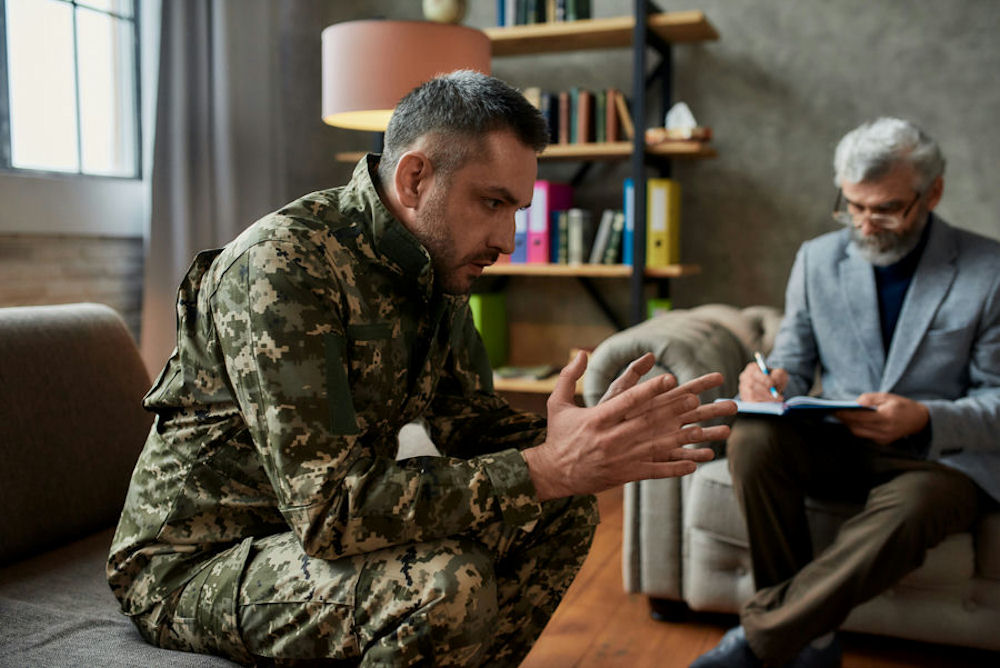PTSD and anxiety share similar symptoms, making it difficult to differentiate between the two. PTSD is a mental health disorder that can develop after a person experiences a traumatic event such as sexual assault, physical violence, or a natural disaster. People with PTSD may experience intrusive thoughts, flashbacks, and nightmares related to the traumatic event. They may also avoid situations or people that remind them of the event and feel numb or detached from others.
Anxiety is a feeling of worry or fear that can arise from a variety of sources. People with anxiety may experience excessive worry about everyday events, have difficulty controlling their worry, and feel restless or on edge. Physical symptoms such as muscle tension, fatigue, and difficulty sleeping can also be present.
PTSD and anxiety can co-occur, and people with PTSD may also experience symptoms of anxiety. At Peak Wellness, our team of experienced mental health professionals is dedicated to helping people recover from these conditions and lead fulfilling lives.
How to Tell the Difference
PTSD and anxiety disorders have some similarities, but they also have some key differences. Here are some of the main differences between PTSD and anxiety:
- Nature of Symptoms: Anxiety is characterized by persistent worry and fear about future events, while PTSD is triggered by past traumatic experiences, resulting in intrusive memories, nightmares, and flashbacks.
- Triggers and Responses: People with anxiety may experience heightened stress in response to everyday situations, whereas those with PTSD may have intense reactions to reminders of their trauma, leading to avoidance behaviors and hypervigilance.
- Duration and Persistence: While anxiety symptoms can fluctuate in intensity and may be present for extended periods, PTSD symptoms tend to be more severe and persistent, often lasting for months or even years after the traumatic event.
- Impact on Functioning: Anxiety can interfere with daily functioning, but PTSD symptoms can be debilitating, affecting relationships, work, and overall quality of life to a greater extent.
- Treatment Approaches: Although both PTSD and anxiety can be effectively treated with therapy and medication, the specific approaches may differ. PTSD often requires trauma-focused therapies like cognitive processing therapy (CPT) or eye movement desensitization and reprocessing (EMDR), whereas anxiety may respond well to cognitive-behavioral therapy (CBT) or exposure therapy.
The Signs of Untreated Trauma
Untreated trauma can also change the brain in significant ways. According to research, exposure to traumatic events can physically change the brain, including the mechanism used for learning and survival. Untreated trauma can have a profound impact on a person’s life. Here are some signs that someone may be experiencing untreated trauma:
- Hypervigilance: a constant feeling of being on edge and being easily startled.
- Avoidance: avoiding people, places, or things that remind them of the traumatic event.
- Flashbacks: experiencing vivid memories of the traumatic event that feel like they are happening again.
- Nightmares: having disturbing dreams related to the traumatic event.
- Anxiety: feeling anxious or worried most of the time.
- Depression: feeling sad or hopeless for an extended period.
- Anger: feeling irritable or angry, sometimes without a clear cause.
- Substance Abuse: using drugs or alcohol to cope with the trauma.
Types of Anxiety Disorders
Anxiety is a common mental health condition that can manifest in different ways. Anxiety comes in a variety of forms:
People with GAD experience persistent and excessive worry about everyday events and activities. They may feel anxious most of the time and have difficulty controlling their worry.
People with social anxiety disorder experience intense fear or anxiety in social situations. They may worry about being judged or scrutinized by others and may avoid social situations as a result.
This condition is characterized by sudden and unexpected panic attacks. These attacks can be accompanied by physical symptoms such as chest pain, sweating, and shortness of breath.
People with agoraphobia experience intense fear or anxiety in situations where they feel trapped, helpless, or embarrassed. They may avoid situations such as public transportation, open spaces, or crowds.
People with phobias experience intense fear or anxiety in response to specific objects or situations. Common phobias include fear of heights, spiders, or flying.
People with PTSD experience anxiety and other symptoms after experiencing or witnessing a traumatic event. Symptoms can include flashbacks, nightmares, and avoidance of situations that remind them of the event.
Each of these anxiety disorders has its symptoms, causes, and treatments. However, they all share a common feature: a fear or worry that is out of proportion to the actual situation or threat.
Overcoming Anxiety and PTSD with Peak Wellness

At Peak Wellness, we understand that anxiety and PTSD can be debilitating conditions that can affect people’s daily lives. Evidence-based treatments are tailored to each person’s unique needs and include cognitive-behavioral therapy (CBT), exposure therapy, and eye movement desensitization and reprocessing (EMDR). These treatments are effective in reducing symptoms of anxiety and PTSD.
Our team of mental health professionals is committed to providing compassionate care to every person who walks through our doors. We work closely with each person to develop a personalized treatment plan that addresses their unique needs and goals. Our goal is to help people regain control of their lives and achieve lasting recovery from anxiety and PTSD.
If you or someone you know is struggling with anxiety or PTSD, we encourage you to reach out to us. You can count on our team for support every step of the way.


